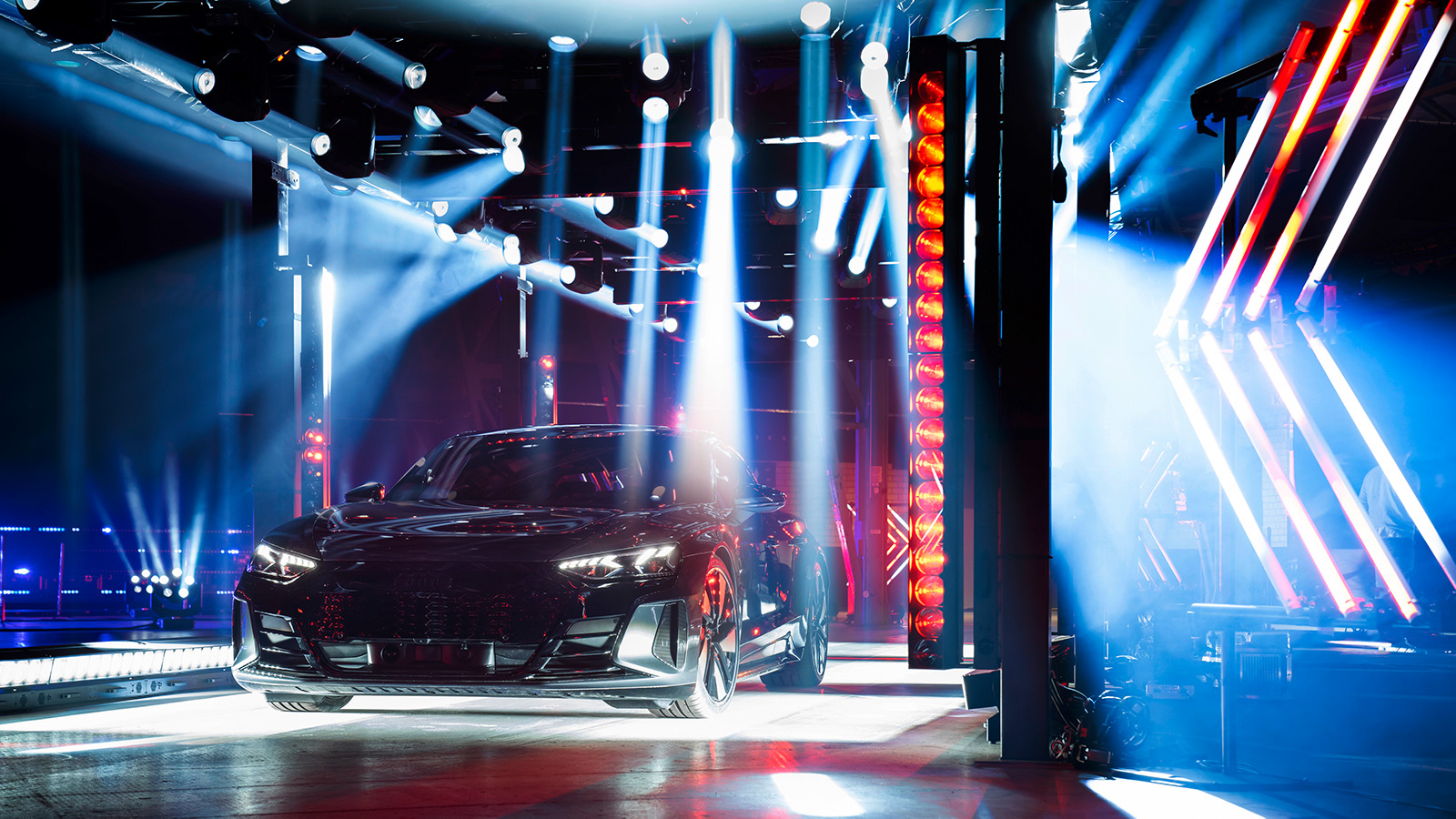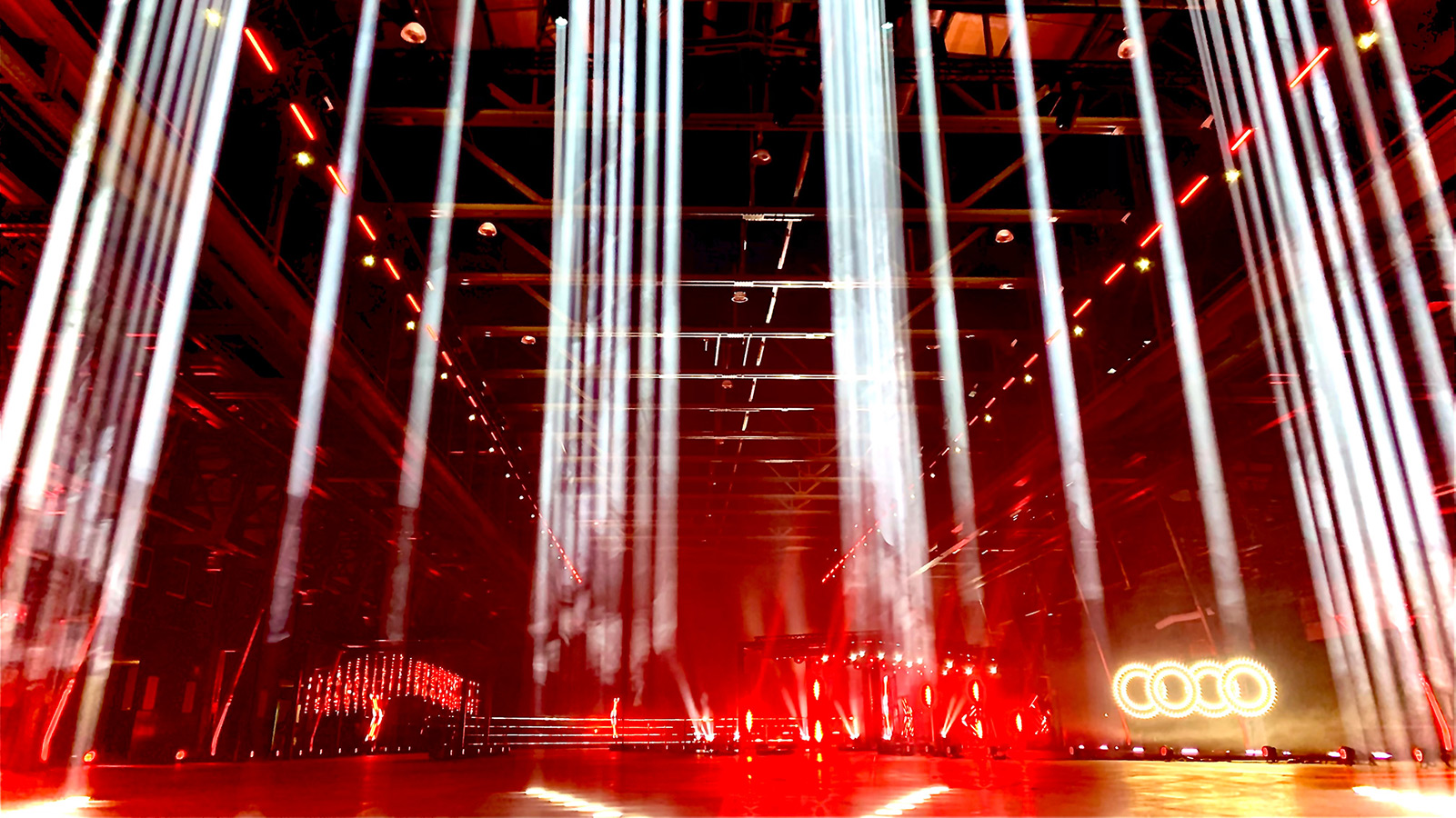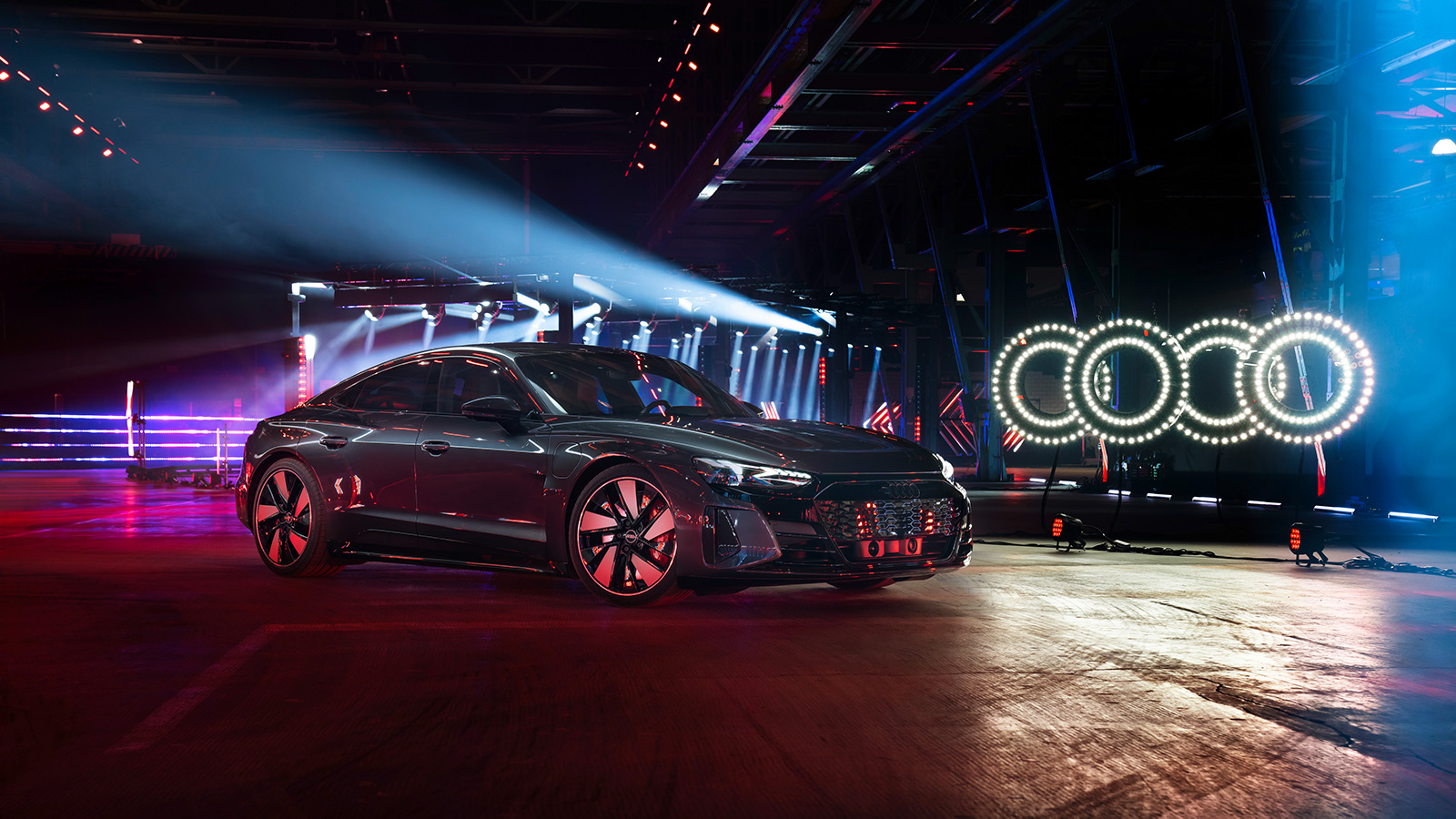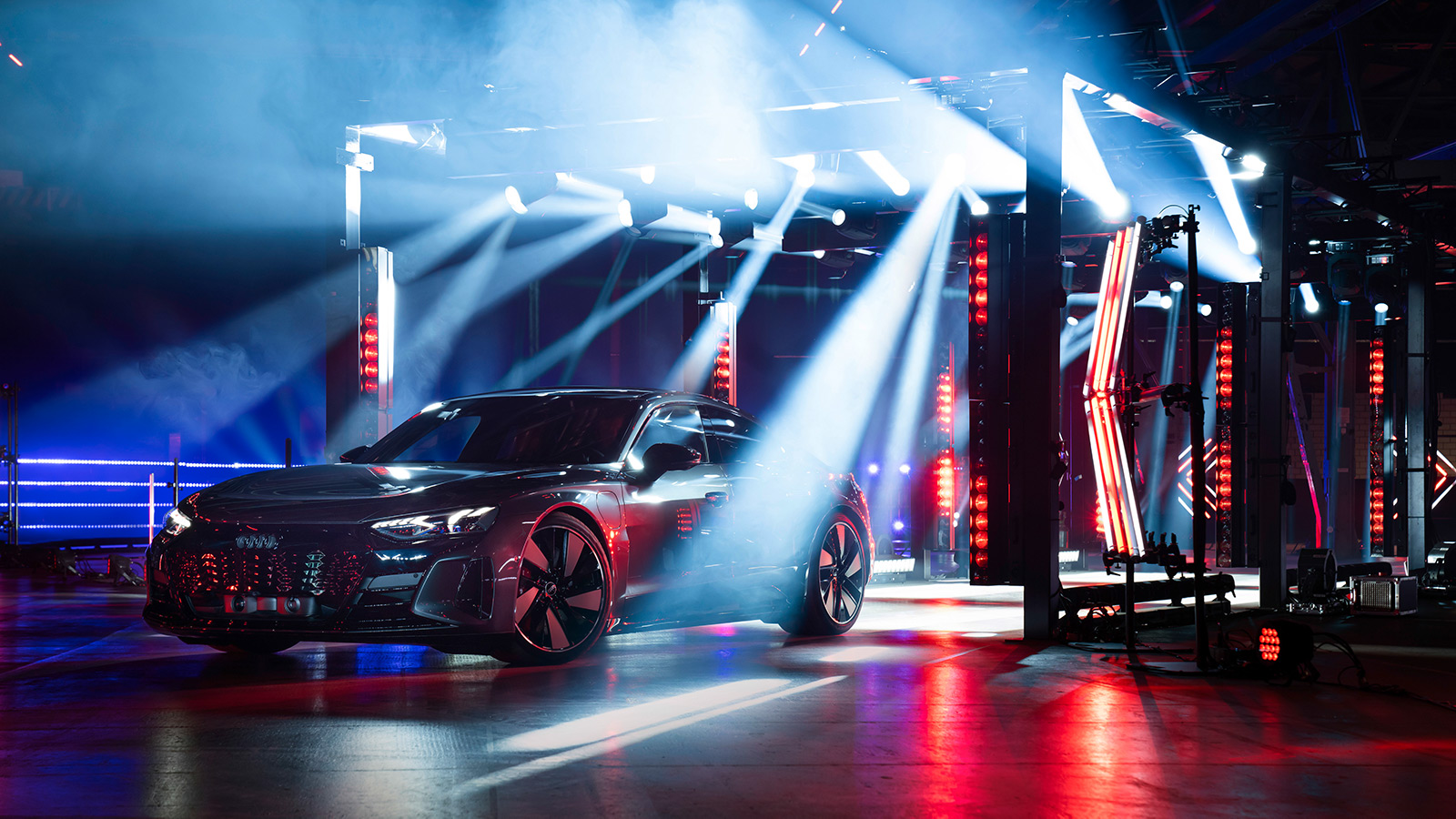LD Raphaël Demonthy stages a driving circuit in the Munich Zenith
Anyone wondering how, under the current conditions, new products can be launched in an effective way within the media, need look no further than Audi. For the presentation of the new e-tron GT, the Ingolstadt-based car manufacturer staged a special kind of demonstration at the Munich Zenith.
The world premiere of the ‘electric spearhead of the four rings’, as it was termed, took place on 9th February 2021 with two digital events; a cinematic intro, using spectacular lighting technology, was produced in advance at the Munich Zenith, and developed by LD Raphaël Demonthy. Demonthy, who has focussed entirely on lighting design and programming over the past 10 years, regularly realises his own design projects, but is also happy to make his talent available to other designers as an associate designer or operator.
As part of the world premiere of the new Audi e-tron GT, an impressive reveal trailer had to be produced. For this purpose, a driving circuit was installed in the Zenith Munich, which was constructed exclusively from light elements. Demonthy used a large number of different GLP fixtures to implement and highlight the varied, dynamic stations of the course.
To produce the ‘carwash’ element, the LD turned to 46 impression FR10 Bars. These Bars framed the tunnel, created laterally—both on the floor and from above. Three FR10 Bars placed on the floor were punctuated by two Bars installed vertically, one above the other. The resulting vertical lines were extended to the ‘tunnel ceiling’, with three further FR10 Bars.
“With this resource, I was able to build a light fog wall, which on the one hand ensured that you couldn't see through, and on the other, created a kind of 'scan effect' when the vehicle passed through,” explained Demonthy. "With the zoom, we were also able to brighten the vehicle from the side, while we used the narrow beams for the light walls."
For the curve at the end of the hall, the designer used 25 impression X4 Bar 20 battens, which were installed at ground level on the inside of the curve. “This enabled us to illuminate the passing vehicles or to hit them with individual light impulses, which further increased the speed in the camera image. Thanks to tilt and zoom, we also had the choice of whether we wanted to illuminate the vehicles directly or indirectly via the ground."
In the stage area, 16 impression X4 were used, which served as fill lights for the camera at the opposite end of the hall.
In the rig itself, 36 JDC1 hybrid strobes were also installed in two lines over the entire length of the hall. “We used this to emphasise the length of the hall on the one hand, and to send bright bumps through the entire hall on the other,” Demonthy continued. “We also created playful effects with the strobe and RGB pixels.”
Demonthy also came up with something special for the famous Audi rings: “In order to have the Audi rings not merely as a static luminous element, but to really integrate them into the course, I recreated them using 32 KNV Arc. Of course, on the one hand they created a light sculpture but on the other, I was able to generate a wide variety of light images and effects very quickly by means of mapping; this enabled the rings to play along perfectly in the circuit.”
With the exception of the FR10 Bar, Demonthy was already familiar with all the GLP products used. When asked why he likes working with fixtures from GLP, he replied: “The solutions from GLP leave a lot of room for creativity in both design and programming. Even if you have seen the various products many times, you can always rediscover them and make them look different."
Raphaël Demonthy worked as a lighting designer on behalf of TFN GmbH & Co. KG, which has been responsible for technical design at trade fairs and events for Audi AG for more than 20 years. On-site lighting operators were Chris Moylan and Matthias Schöffmann. The technical service provider was fournell showtechnik GmbH.





